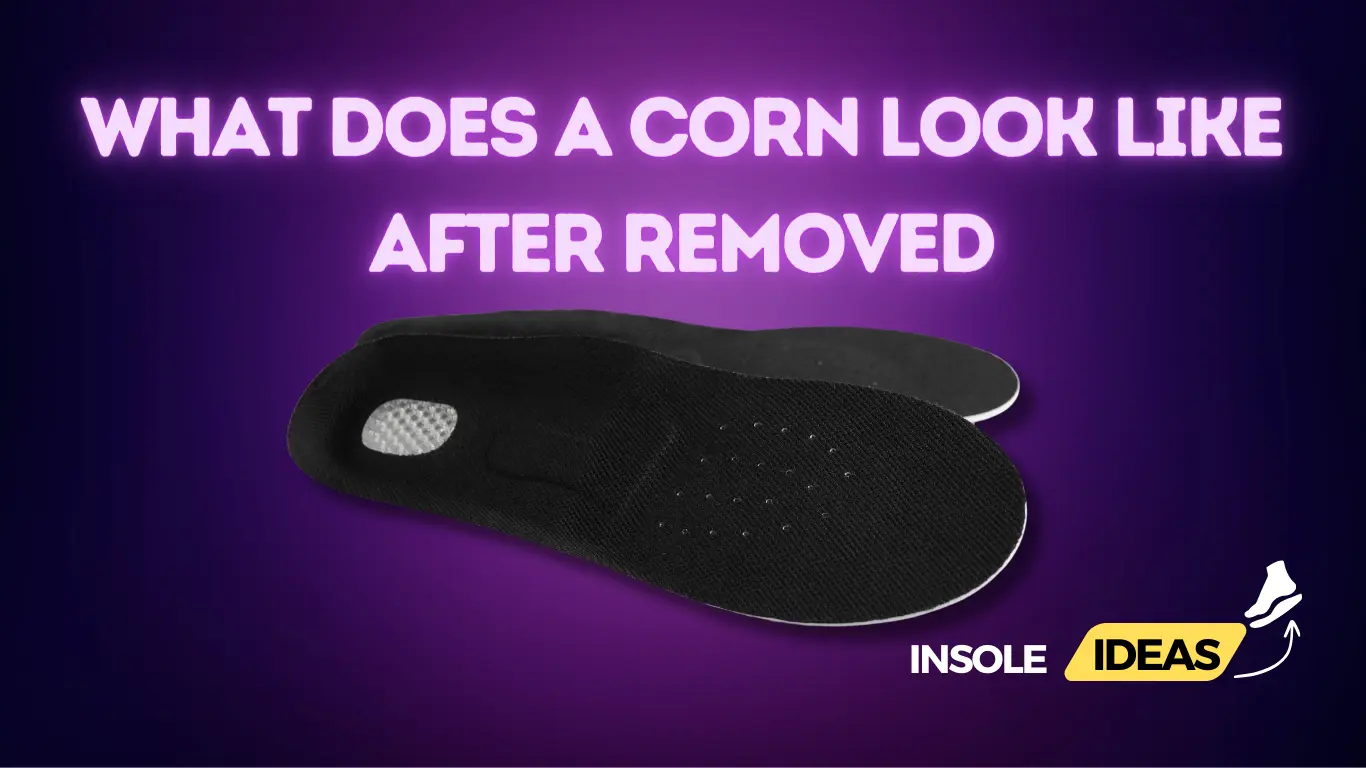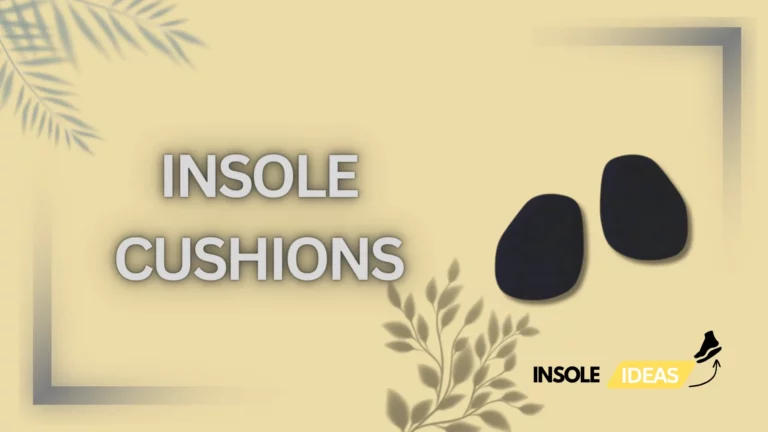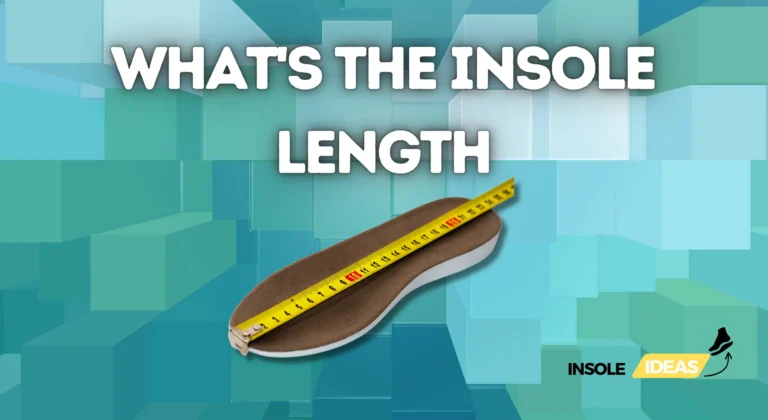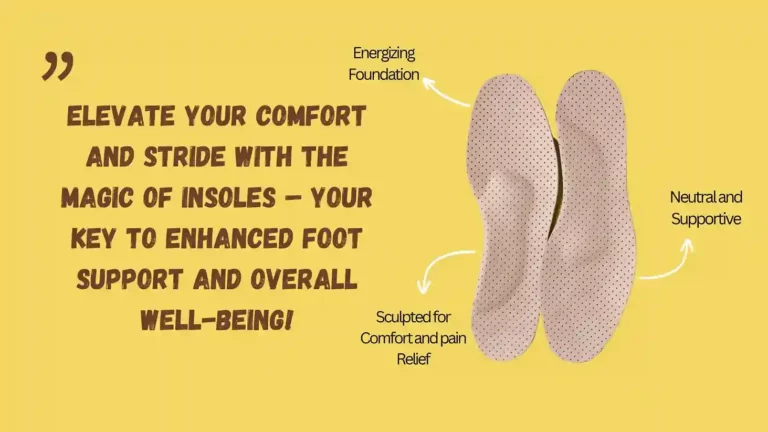Unveiling the Transformation: Exploring Corn Removal and Its Impact on Insoles
Corns are small, localized areas of thickened skin that typically develop on the feet due to pressure or friction. They often occur on the toes or the sides of the feet, where rubbing against footwear is common. Understanding the relationship between corns and insoles is crucial for effective management and prevention. Insoles, or shoe inserts or footbeds, are orthopedic devices placed inside shoes to provide support, cushioning, and foot alignment. They play a significant role in distributing pressure evenly across the foot and can alleviate discomfort associated with corns by reducing friction and providing additional padding.
Insoles can help relieve pressure points and distribute weight, reducing the likelihood of corn formation or exacerbation, understanding how insoles work can empower individuals to make informed choices about their footwear and foot health.
Importance of Foot Health and Proper Insole Use
Maintaining foot health is essential for overall well-being and mobility. Corns can significantly impact foot health, leading to discomfort, pain, and even mobility issues if left untreated. Proper insole use can alleviate these problems by providing support and cushioning to the feet, reducing pressure on sensitive areas, and promoting proper alignment.
Insoles not only improve comfort but also contribute to the prevention of foot problems like corns, calluses, and even more severe conditions such as plantar fasciitis or bunions. Investing in quality insoles and incorporating them into daily footwear can significantly affect foot health and overall quality of life. Whether for athletic activities, everyday wear, or specific foot conditions, choosing the right insoles and using them correctly can have long-term benefits for foot health and mobility.
Preparing for Corn Removal
Consultation with a Podiatrist
Before undergoing corn removal, scheduling a consultation with a qualified podiatrist is essential. During this appointment, the podiatrist will assess the corn’s severity, determine the most appropriate treatment plan, and discuss potential risks or complications. They will also evaluate the overall health of your feet and may recommend additional measures to improve foot health and prevent future corns. It’s crucial to be transparent about any underlying medical conditions or medications you are taking to ensure safe and effective treatment.
Evaluating Insole Options for Post-Removal Comfort
After corn removal, selecting the right insoles is crucial for ensuring post-removal comfort and preventing recurrence. Various insoles are available, including cushioned, supportive, and custom orthotics. Your podiatrist can provide recommendations based on your foot structure, gait patterns, and specific needs. Choosing insoles that provide adequate cushioning and support while promoting proper foot alignment is essential. Additionally, consider material, durability, and compatibility with your footwear to ensure maximum comfort and effectiveness.
Corn Removal Procedures
Anesthesia and Numbing Techniques
Corn removal procedures typically involve numbing the affected area to minimize discomfort. Your podiatrist may use local anesthesia or topical numbing agents to ensure a painless experience. Before administering anesthesia, they will thoroughly clean and sterilize the area to reduce the risk of infection. Once the area is numb, the podiatrist will proceed with the chosen removal method, whether surgical or non-surgical, with minimal discomfort or pain.
Surgical and Non-Surgical Removal Methods
There are several methods for removing corns, ranging from non-invasive techniques to surgical procedures. Non-surgical options may include debridement using a pumice stone or salicylic acid patches to soften and remove the corn over time. Surgical options may involve cutting away the corn tissue or using laser therapy to remove the affected area precisely. Your podiatrist will recommend the most suitable method based on factors such as the size, location, and depth of the corn, as well as your overall health and preferences. It’s essential to follow post-removal care instructions carefully to promote healing and prevent complications.
Post-Removal Changes: Insole Perspective
Immediate Effects on Insole Fit and Feel
Following corn removal, you may notice immediate changes in the fit and feel of your insoles. The removal of the corn may alleviate pressure and discomfort, resulting in improved overall comfort and mobility. However, it’s essential to monitor any changes in the fit of your insoles and adjust them accordingly to ensure proper support and alignment. If necessary, consult your podiatrist for recommendations on adjusting or replacing your insoles to accommodate post-removal changes.
Long-Term Impact on Insole Support
Over the long term, corn removal can significantly impact insole support and effectiveness. By eliminating the source of pressure and friction, corn removal can prevent recurrence and maintain the integrity of your insoles. However, wearing supportive insoles is essential to prevent new corns from forming and promote overall foot health. Regularly inspect your insoles for signs of wear and tear, and replace them as needed to ensure optimal support and comfort. Additionally, continue practicing good foot hygiene and wearing properly fitted footwear to reduce the risk of corns and other foot problems.
Visual Examination of Removed Corn
Comparison of Corn-affected Insole vs. Post-Removal
Visual examination plays a crucial role in assessing the effectiveness of corn removal and the impact on insole conditions. Before removal, the corn-affected insole may show signs of wear, including redness, inflammation, and thickened skin where the corn has formed. After removal, the area previously occupied by the corn will appear smoother and less inflamed. A comparison of before and after images can provide valuable insights into the effectiveness of the removal procedure and the overall improvement in foot health.
Insights into Corn Formation and Insole Wear
Examining the removed corn can provide valuable insights into corn formation and its relationship to insole wear. Corns develop due to prolonged pressure or friction on specific areas of the foot, often caused by ill-fitting footwear or biomechanical abnormalities. Analyzing the corn’s size, shape, and location can help identify contributing factors and inform preventive measures to avoid recurrence. Additionally, examining the condition of the surrounding insole can reveal patterns of wear and areas of increased pressure, guiding adjustments to footwear or insole design to prevent future corn formation.
Maintaining Foot Health Post-Removal
Preventive Measures for Corn Recurrence
After corn removal, it’s essential to take preventive measures to minimize the risk of recurrence. This includes wearing properly fitted footwear with adequate cushioning and support to reduce pressure on vulnerable foot areas. Regularly inspecting the feet for signs of friction or pressure points and addressing them promptly can also help prevent the formation of new corns. Additionally, practicing good foot hygiene, such as keeping the feet clean and dry, can reduce the risk of corn recurrence.
Choosing the Right Insole for Continued Comfort
Selecting the correct insole is crucial for maintaining comfort and preventing corn recurrence post-removal. Consider factors such as foot shape, arch support, and cushioning when choosing an insole. Custom orthotic inserts may be recommended for individuals with specific foot conditions or biomechanical issues. It’s essential to replace insoles regularly to ensure optimal support and cushioning. Consulting with a podiatrist can help determine the best insole option based on individual needs and foot characteristics.
Addressing Common Concerns
Will Corns Reappear After Removal?
While corn removal effectively eliminates existing corn, there is a risk of recurrence if preventive measures are not taken. Factors such as footwear choice, foot mechanics, and underlying medical conditions can contribute to corn formation. Taking proactive steps to reduce pressure and friction on the feet, such as wearing properly fitted footwear and cushioned insoles, can help prevent corn recurrence.
Can Insoles Prevent Future Corn Formation?
Insoles prevent future corn formation by cushioning, support, and pressure redistribution. Properly fitted insoles can help alleviate pressure points and reduce friction, minimizing the risk of corn development. Custom orthotic inserts may be recommended for individuals with specific foot issues or biomechanical abnormalities to provide tailored support and comfort.
How Soon Can Regular Activities Resume After Removal?
The recovery time after corn removal varies depending on the removal method and individual healing factors. In most cases, individuals can resume regular activities within a few days to a week after removal. However, following post-removal care instructions provided by the podiatrist is essential to promote healing and minimize the risk of complications. Activities that involve prolonged standing or excessive pressure on the feet may need to be limited until the area has fully healed. If there are any concerns or complications during the recovery process, it’s essential to consult with the podiatrist for guidance.
Lifestyle Adjustments for Corn Prevention
Footwear Selection Guidance for Insole Support
Choosing the proper footwear is essential for preventing corns and ensuring the effectiveness of insole support. Opt for shoes that provide ample room for toes and adequate arch support. Avoid shoes with narrow-toe boxes or high heels, as they can increase pressure on vulnerable areas of the feet and contribute to corn formation. Look for shoes with removable insoles that can accommodate custom orthotics or provide additional cushioning and support. Consider consulting with a podiatrist or footwear specialist for personalized recommendations based on your foot shape, gait, and specific needs.
Foot Hygiene Practices to Complement Insole Use
Good foot hygiene is crucial for preventing corns and maintaining overall foot health, especially when using insoles. Keep feet clean and dry to avoid moisture buildup, which can lead to friction and skin irritation. Regularly trim toenails straight across to avoid ingrown nails and discomfort. Moisturize the feet with a gentle lotion to prevent dryness and cracking, but avoid applying lotion between the toes, as this can create a moist environment conducive to fungal infections. Proper foot hygiene and supportive insoles can help prevent corns and promote overall foot comfort.
Exploring Alternative Insole Solutions
Customized Orthotic Inserts for Corn Prevention
Custom orthotic inserts are designed to address specific foot issues and provide tailored support and comfort. These inserts are typically made based on a mold or digital foot scan to ensure a precise fit. Custom orthotics can help redistribute pressure, correct biomechanical imbalances, and reduce the risk of corn formation by providing adequate support and cushioning. While custom orthotics may be more expensive than off-the-shelf insoles, they offer long-term benefits for foot health and can help prevent corns and other foot problems.
Natural Materials for Insole Comfort and Support
In addition to traditional orthotic inserts, alternative insole options are made from natural materials such as cork, wool, or bamboo. These materials offer breathability, moisture-wicking properties, and antimicrobial benefits, making them suitable for individuals with sensitive skin or allergies. Natural insoles can provide cushioning and support while promoting foot health and comfort. Consider trying natural insoles as an alternative to synthetic materials, especially if you have concerns about chemical exposure or environmental impact. However, choosing genuine insoles that provide adequate support and cushioning for your specific foot needs is essential.
Seeking Professional Guidance
When to Seek Podiatric Advice for Corn-Related Issues
It is advisable to seek podiatric advice if you experience persistent or severe corns, as they may require professional treatment or intervention. Signs warranting podiatric evaluation include constant pain, redness, swelling, or infection around the corn. Individuals with underlying medical conditions such as diabetes or circulation problems should consult a podiatrist for proper foot care and management of corn-related issues. Early intervention and appropriate treatment can help prevent complications and promote optimal foot health.
Importance of Insole Assessment in Foot Health
Insole assessment is crucial for maintaining foot health and preventing corns and other problems. A podiatrist can assess your foot structure, gait, and specific needs to recommend the most suitable insole type and fit. Regularly evaluating the condition of your insoles and replacing them as needed can help ensure continued support and comfort. Insole assessment is particularly important for individuals with foot conditions or biomechanical abnormalities that may require customized orthotics or special accommodations. Consulting with a podiatrist for insole assessment and guidance can help prevent corns and promote overall foot health and mobility.
Debunking Myths Surrounding Corns and Insoles
Common Misconceptions about Corn Formation
One common misconception about corns is that they only occur in older individuals or those with poor hygiene. Corn can develop in people of all ages and backgrounds, often due to pressure or friction on the feet from ill-fitting footwear or biomechanical issues. Another myth is that corns have roots that must be removed to prevent recurrence. Corns do not have roots like plants; instead, they form as a response to pressure or friction and can be effectively treated by addressing the underlying cause and providing proper foot care.
Insole Myths and Their Impact on Foot Health
Several myths surround the use of insoles, including the belief that they can worsen foot problems or cause dependency. In reality, adequately fitted insoles can provide valuable support and cushioning to alleviate discomfort and promote proper foot alignment. Another common myth is that all insoles are the same, leading some individuals to choose inexpensive or poorly constructed options that may not adequately address their specific foot needs. It’s essential to consult with a podiatrist or footwear specialist to determine the right insoles for your individual foot shape, condition, and activity level.
Understanding the Psychological Impact
Improved Confidence with Corn Removal and Insole Comfort
The removal of corn and the use of supportive insoles can significantly impact an individual’s confidence and self-esteem. Corns can be unsightly and painful, leading to embarrassment or self-consciousness in social situations. By eliminating corn and relieving discomfort, individuals can feel more confident in their appearance and ability to participate in activities without fear of pain or discomfort. Additionally, insoles’ improved comfort and support can enhance overall well-being and quality of life, leading to a more positive outlook and increased confidence in daily activities.
Mental Relief from Corn-Induced Discomfort
The psychological impact of corn-induced discomfort can significantly affect mood, productivity, and overall quality of life. Chronic foot pain can lead to frustration, irritability, and even depression as individuals struggle to find relief from constant discomfort. Corn removal and supportive insoles can relieve this discomfort, improving mental well-being and emotional resilience. By addressing the underlying cause of foot pain and discomfort, individuals can experience mental relief and regain control over their lives.
Testimonials and Success Stories
Real-Life Experiences with Corn Removal and Insole Use
Reading real-life experiences and testimonials from individuals who have undergone corn removal and used supportive insoles can provide valuable insights and inspiration. Hearing how others have successfully overcome corn-related issues and improved foot health with proper treatment and care can offer hope and encouragement to those facing similar challenges. Real-life testimonials can also help dispel myths and misconceptions surrounding corns and insoles, providing reassurance and guidance to individuals seeking relief from foot pain and discomfort.
Insights from Individuals Who Have Benefited from Insole Support
Insights from individuals who have experienced the benefits of insole support firsthand can be invaluable in understanding the importance of proper foot care and the role of supportive footwear in overall health and well-being. Hearing how insoles have improved comfort, reduced pain, and enhanced mobility for others can inspire individuals to prioritize foot health and seek appropriate treatment and support. Insights from individuals who have benefited from insole support can also provide practical tips and recommendations for choosing the right insoles and integrating them into daily life for maximum comfort and effectiveness.
Ethical Considerations in Corn Removal
Informed Consent in Podiatric Procedures
Informed consent is a fundamental ethical principle in podiatric procedures, including corn removal. Podiatrists are responsible for fully informing patients about the procedure’s nature, potential risks and benefits, alternative treatment options, and expected outcomes. Patients should be able to ask questions and make informed decisions about their care. Additionally, podiatrists must ensure that patients understand the limitations of treatment, the possibility of recurrence, and any associated costs or insurance coverage. Respecting patient autonomy and providing comprehensive information allows individuals to make choices that align with their values and preferences.
Ethical Practices in Recommending and Using Insoles
When recommending and using insoles, ethical considerations include ensuring that recommendations are based on evidence-based practice and tailored to the individual’s specific needs and preferences. Podiatrists should consider factors such as foot structure, gait mechanics, and activity level when recommending insoles and provide education about proper use and care. Additionally, podiatrists should avoid conflicts of interest, such as recommending specific brands or products for financial gain, and prioritize patient well-being. The ethical practice of advising and using insoles involves transparency, integrity, and a commitment to promoting patient health and safety.
Exploring Future Possibilities
Advancements in Corn Treatment and Insole Technology
Advancements in corn treatment and insole technology promise to improve outcomes and enhance patient comfort. On the corn treatment front, emerging techniques such as laser therapy, cryotherapy, and regenerative medicine approaches may offer less invasive and more effective alternatives to traditional surgical methods. Insole technology is also evolving, with innovations such as 3D printing, innovative materials, and pressure-sensing technology enabling customized solutions tailored to individual foot characteristics and activity levels. These advancements can revolutionize corn treatment and insole design, providing patients with safer, more comfortable, and more effective options for managing foot health.
Innovations to Enhance Insole Comfort and Effectiveness
Innovations to enhance insole comfort and effectiveness are driven by a growing understanding of biomechanics and materials science. New materials such as memory foam, gel, and carbon fiber offer improved cushioning, shock absorption, and support, while advancements in manufacturing techniques allow for greater precision and customization. Additionally, wearable technology such as activity trackers and smartphone apps can provide real-time feedback on foot pressure distribution and gait mechanics, helping individuals optimize insole fit and function. By continuously pushing the boundaries of innovation, researchers and manufacturers strive to create insoles that alleviate foot pain and discomfort and enhance mobility, performance, and overall quality of life for individuals of all ages and activity levels.
Conclusion: Embracing Foot Health with Insoles
Recap of the Significance of Corn Removal and Insole Use
In conclusion, corn removal and insole use are integral in promoting foot health and enhancing quality of life. Corns can cause pain, discomfort, and psychological distress, but with proper treatment and preventive measures, individuals can experience relief and regain confidence in their mobility. Insoles provide essential support, cushioning, and alignment, helping to prevent corn recurrence and maintain overall foot health. Individuals can enjoy greater comfort, mobility, and well-being by prioritizing foot health and embracing the use of supportive footwear and insoles.
Encouragement for Proactive Foot Care and Insole Maintenance
As we conclude, it’s essential to emphasize the importance of proactive foot care and insole maintenance. Regular podiatric check-ups, proper footwear selection, and diligent insole care can help prevent foot problems and minimize the need for invasive treatments such as corn removal. Individuals can enjoy greater comfort, mobility, and independence for years by taking a proactive approach to foot health and embracing insoles. Let’s commit to prioritizing foot health and supporting each other toward happier, healthier feet.





